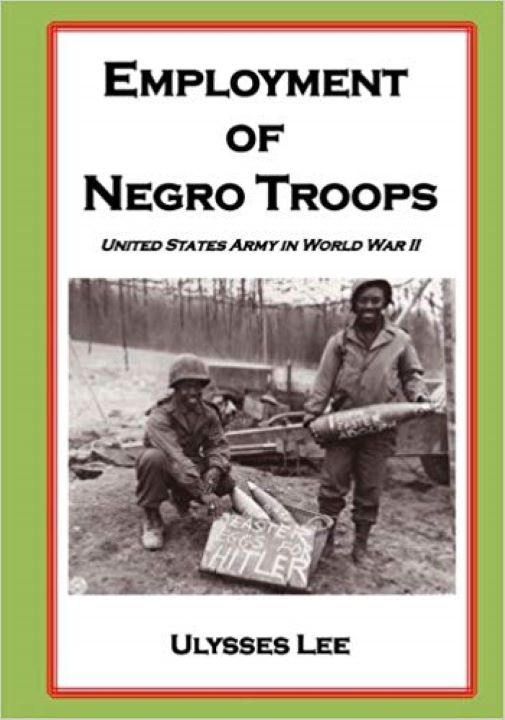The work started in the 1940s is written in the vernacular of the period. From the volume – As in the case of some other titles in the United States Army in World War II series, Ulysses Lee’s The Employment of Negro Troops has been long and widely recognized as a standard work on its subject. Although revised and consolidated before publication, the study was written largely between 1947 and 1951. If the now much-cited title has an echo of an earlier period, that very echo testifies to the book’s rather remarkable twofold achievement: that Lee wrote it when he did, well before the Civil Rights movement of the 1960s, and that its reputation— for authority and objectivity—has endured so well. Recognizing that the story of Negro participation in military service during World War II was of national interest as well as of great value for future military planning, the Assistant Secretary of War in February 1944 recommended preparation of a book on this subject. The opportunity to undertake it came two years later with the assignment to the Army’s Historical Division of the author, then a captain and a man highly qualified by training and experience to write such a work. After careful examination of the sources and reflection Captain Lee concluded that it would be impractical to write a comprehensive and balanced history about Negro soldiers in a single volume. His plan, formally approved in August 1946, was to focus his own work on the development of Army policies in the use of Negroes in military service and on the problems associated with the execution of these policies at home and abroad, leaving to the authors of other volumes in the Army’s World War II series, then taking shape, the responsibility for covering activities of Negroes in particular topical areas. The volume opens with background chapters recalling the experience of Negroes in the Army in World War I, the position of Negroes in the Army between wars, and Army planning for their use in another great war, as well as the clash of public and private views over employment of Negroes as soldiers. It continues with chapters on the particular problems associated with absorbing large numbers of Negroes into the Army—the provision of separate facilities for them, their leadership and training difficulties, their physical fitness for service, morale factors influencing their eagerness to serve, and the disorders that attracted so much attention to the problems of their service. The concluding eight chapters are concerned principally with the employment of Negro soldiers overseas, in ground and air combat units and in service units. 760 pages





